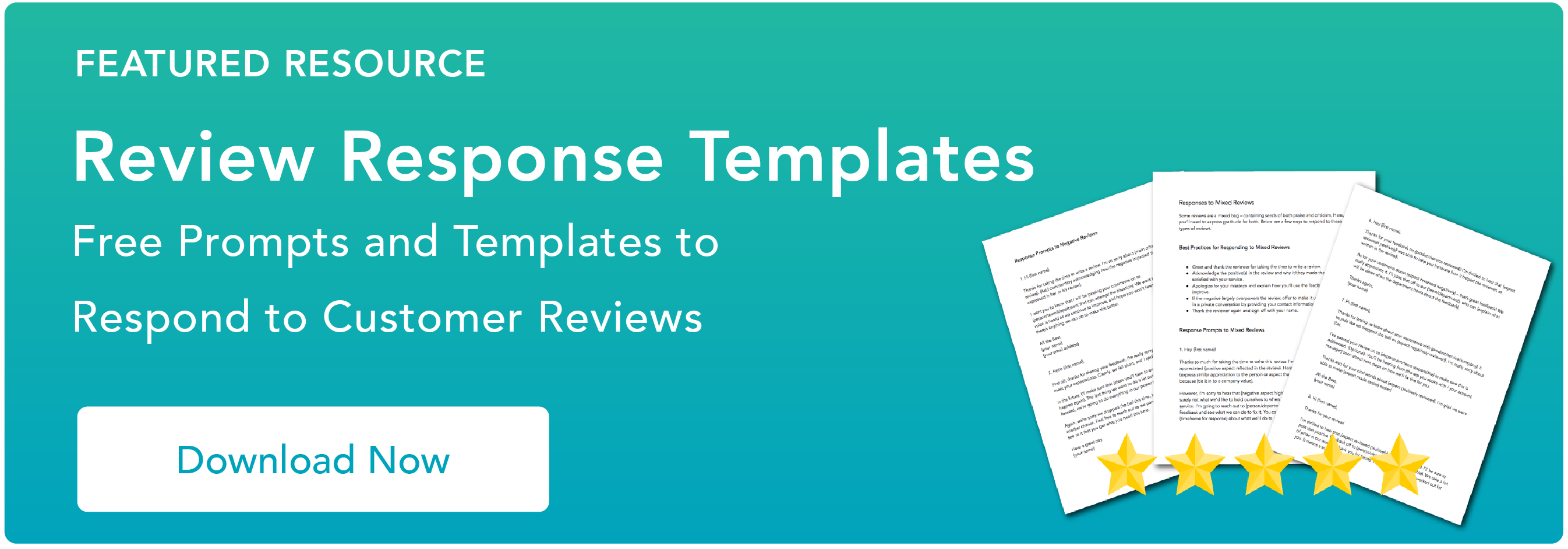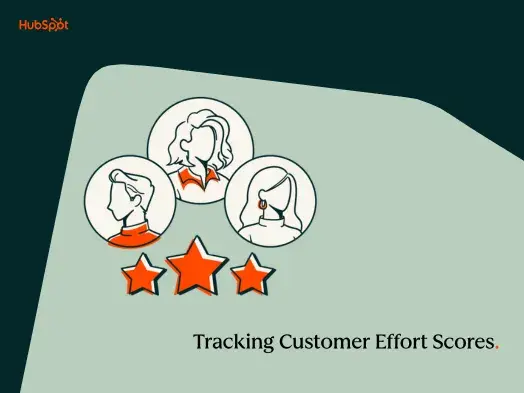What is review management?
Review management is the process of monitoring reviews left online about your business across various websites. This is done to ensure that you can execute your review response strategy, resolve customer issues as they arise, and quickly remove fake reviews before they cause any issues.
All businesses, regardless of size, should practice review management. Your review management strategy may differ based on your business needs, but some popular practices include responding to reviews and identifying and deleting fake ones.
Although similar, review management is not the same as reputation management.
Review Management vs. Reputation Management
Reputation management is the process of ensuring that perception of your brand is positive and taking strategic action to improve it if it’s not. As reviews significantly impact the way your business is perceived and what your reputation is, review management is a part of managing your reputation.
In brief, the key difference between the two is that reputation management includes monitoring social media conversations, an optimized and accurate Google My Business profile, and search results, in addition to review sites.
Let’s go over the benefits of review management and how it will help your business.
The Benefits of Review Management
As 82% of consumers read online reviews for local businesses, review management is crucial. It allows you to understand what is being said about your business online and step in and rectify experiences when necessary. Consumers that read reviews will see that you actively take notice of what is being said, care about their experiences, and will appreciate that you take the time to make things right.
In addition, 9 out of 10 people read reviews before visiting or making a purchase from a business, so neglecting the sites where people talk about you can negatively affect your customer acquisition. Considering that fake reviews are also a thing, managing ensures that your customers only see genuine reviews to help them make their decisions, regardless of whether they’re positive or negative.
Having a review management strategy also helps you avoid damaging scenarios when you quickly identify negative or fake reviews and respond accordingly before the situation gets out of hand. (This is how review management plays into reputation management).
Lastly, actively managing your reviews allows you to find positive reviews and testimonials to use as user-generated content (UGC) in your marketing materials. In fact, 79% of people say UGC highly impacts their purchasing decisions, so it’s a win-win.
Tips for Successful Review Management
1. Identify key review sites to focus on.
One of the most important things to do for successful review management is to identify the review sites that are:
- Most critical and influential over your business,
- Most relevant to your industry,
- Where consumers will be looking based on what you offer.
While sites like Google and Yelp are always heavy-hitters for most businesses, consider running a search through all review networks you can think of and see what is being said about you there, or if anything is being said at all. If the website has little influence over your industry and there are barely any reviews, that is likely not the best platform to prioritize for managing.
2. Claim your business on your preferred review sites.
Claiming your business on the review sites you choose to use is a critical step, as it ensures that you have authority over your business page and can manage the site. The process may be different for each website you use, but here’s a guide on how to claim your business on Google and Yelp.
3. Create a review management strategy.
After you’ve identified the websites to focus on, create a review management strategy. This process should help you methodically manage reviews when they come in, like how quickly you respond to them and what types of reviews you want to respond to.
Here are some questions to consider when creating your strategy:
- How often will you review each website?
- What members of your team will review each website?
- What reviews will you respond to? Which reviews will you not respond to?
Will you check for new reviews and respond every day, twice per week, or once per week?
You should aim to select those who have experience with your brand messaging and an understanding of how to interact with customers.
You want to ensure that you focus on those that have the most potential to reflect positively on your business, whether they’re positive or negative. For example, publicly responding to negative reviews and offering solutions shows potential customers that you’re committed to customer service and their experience with your brand. Here’s a guide to responding to reviews on Google.
4. Learn to identify fake reviews and request removal.
Not every customer will be satisfied with your business, and they may express that in their reviews. However, while it may be disheartening to see, it allows you to learn from their experience and implement changes.
Some reviews, however, that display negativity towards your business are fake and should be removed. Given this, an important tip for successful review management is to learn how to spot fake reviews (here’s a guide for doing so on Google) and to request their removal when you find them.
5. Leverage a review management software tool.
As you’ll be monitoring reviews on multiple platforms, it can be helpful to automate and use a software tool. Most tools allow you to aggregate your reviews in one dashboard, helping you view everything simultaneously and execute your review management strategy all at once. Let’s discuss some high-quality options below.
Review Management Software
1. Yext
Price: Varies by listing site, contact sales for more info
Yext’s Reviews Management tool helps you manage your online reviews across the many different platforms you use (Google, Facebook, etc.,) all within a single dashboard. You’ll get notifications whenever a review is left, helping you stay up-to-date about what people are saying about you so you can easily take control of every situation.

2. Reviewly AI
Price: Starting at $39/mo, includes 7-day free trial (no credit card required)
Reviewly AI is a new review management software that helps businesses get more Google reviews with AI. Reviewly AI enables you to one-click connect Google Business pages-- which is great for single-location businesses, multi-location businesses, and agencies managing client businesses.
You can also send automated SMS campaigns to customers for reviews, and it helps customers write AI-assisted, high-quality reviews—within seconds.
What we like: Reviewly AI users can also leverage the AI assistant to better respond to customer reviews—saving you time and the headache of crafting the perfect response. The best part? Reviewly AI is affordable and offers a 7-day free trial across all business and agency plans.
3. SocialPilot Reviews
Price: Starts at $25.50 per month with unlimited users and 5000 monthly email credits
SocialPilot Reviews lets you generate, manage, and respond to reviews at scale, all from a single AI-powered platform. Request reviews via automated email and SMS campaigns, track feedback across multiple locations and brands, and foster customer trust by promptly addressing feedback. Optimize your online reputation and drive business growth with actionable insights from genuine customer reviews.

What we like: You can analyze individual reviews to your customer success team to identify issues to resolve to optimize your tools and business. This allows you to optimize your reputation with actionable tasks.
4. ReviewTrackers
Price: Lite (only Google and Facebook reviews) - Platinum (unlimited sites), contact for pricing
ReviewTrackers allows you to manage and monitor your reviews from 100+ review sites in an aggregate platform, so you get an overview of consumers' thoughts.
![]()
What we like: You can assign individual reviews to specific people on your team based on their content, a single click button to share reviews that are high-impact or high-priority, and respond to reviews in accordance with your brand guidelines.
5. Podium
Price: Contact for a custom quote
Podium’s all-in-one inbox allows you to manage reviews from all your preferred sites and industry-specific pages related to your business offerings. You’ll also receive notifications whenever a new review is left so you can quickly take charge should any issues arise.

What we like: Podium provides competitor benchmark data, helping you understand how your ratings fare against competitors and helping you identify possible areas for improvement in your existing strategy.
6. Reputation
Price: Contact for custom quote
Reputation allows you to easily monitor, request, and respond to reviews on hundreds of third-party review sites. The platform also makes it easy to broadcast positive customer feedback on your website and across social platforms such as Facebook, Twitter, and Google. You can take it a step further by analyzing review sentiment to uncover trends, analyze performance, and prioritize the next steps.

What we like: Reputation's Review Booster can help you turn customer survey responses into ratings and reviews on Google, Tripadvisor, and more. By supercharging your review requests, Reputation can help increase review volume up to 40 percent.
7. BirdEye
Price: Contact for custom quote
BirdEye aggregates reviews from your preferred review sites, as well as 150+ different platforms, ensuring that you get a comprehensive understanding of everything being said about you online.

What we like: With BirdEye, you can organize reviews into custom fields (regions, products, rating number, etc.) to help you understand how different areas of your business are performing, helping you create a comprehensive strategy.
Best Review Management Software
Customers have a lot of power over your business when they decide to write a review, especially since potential customers use the recommendations of others to make purchasing decisions.
To stay on top of your customer reviews, create a monitoring process, select the best review management software option that works for you, and begin executing your strategy.
Customer Service
.png?width=112&height=112&name=Image%20Hackathon%20%E2%80%93%20Horizontal%20(34).png)









.png)

-2.png)
